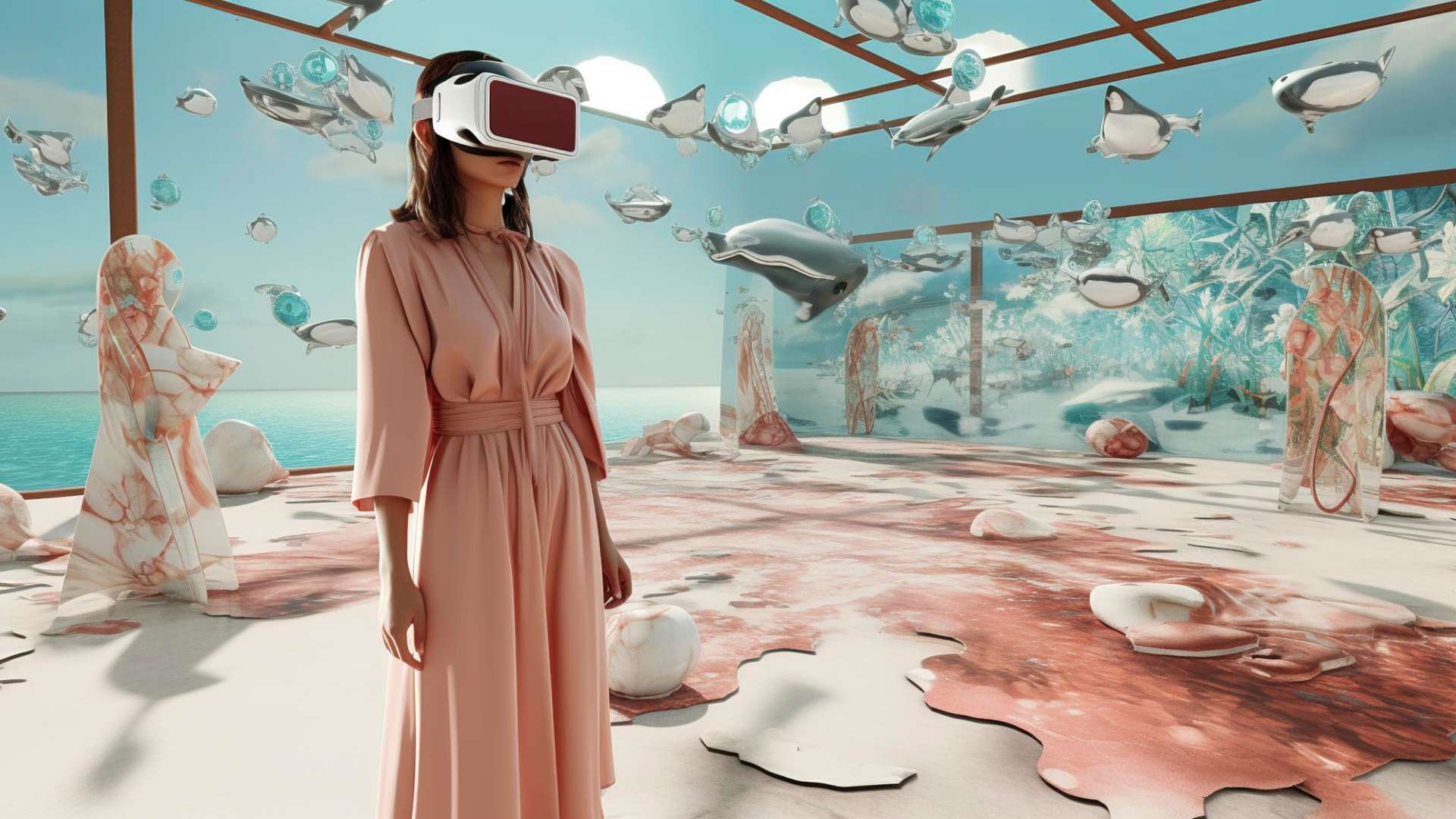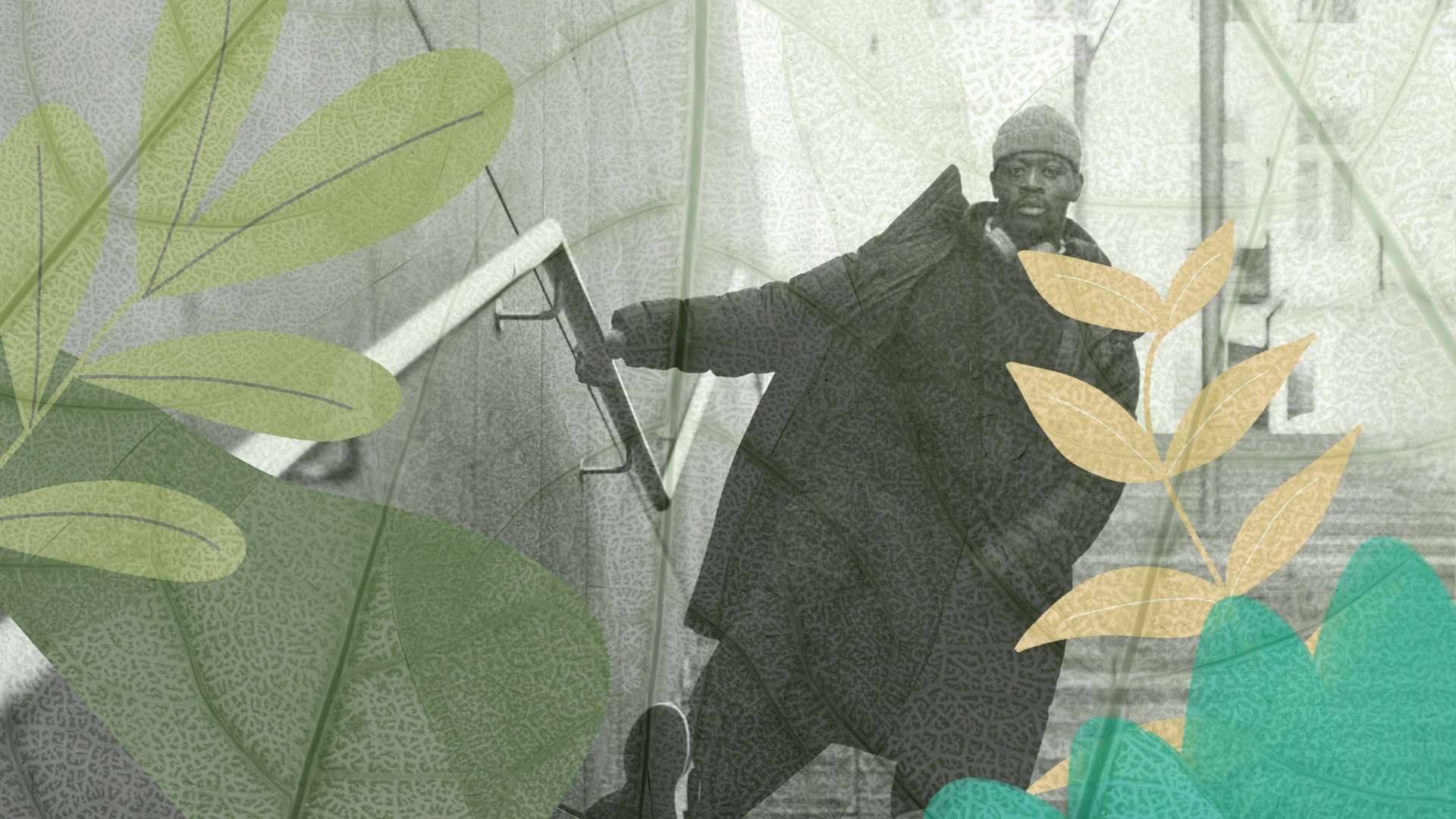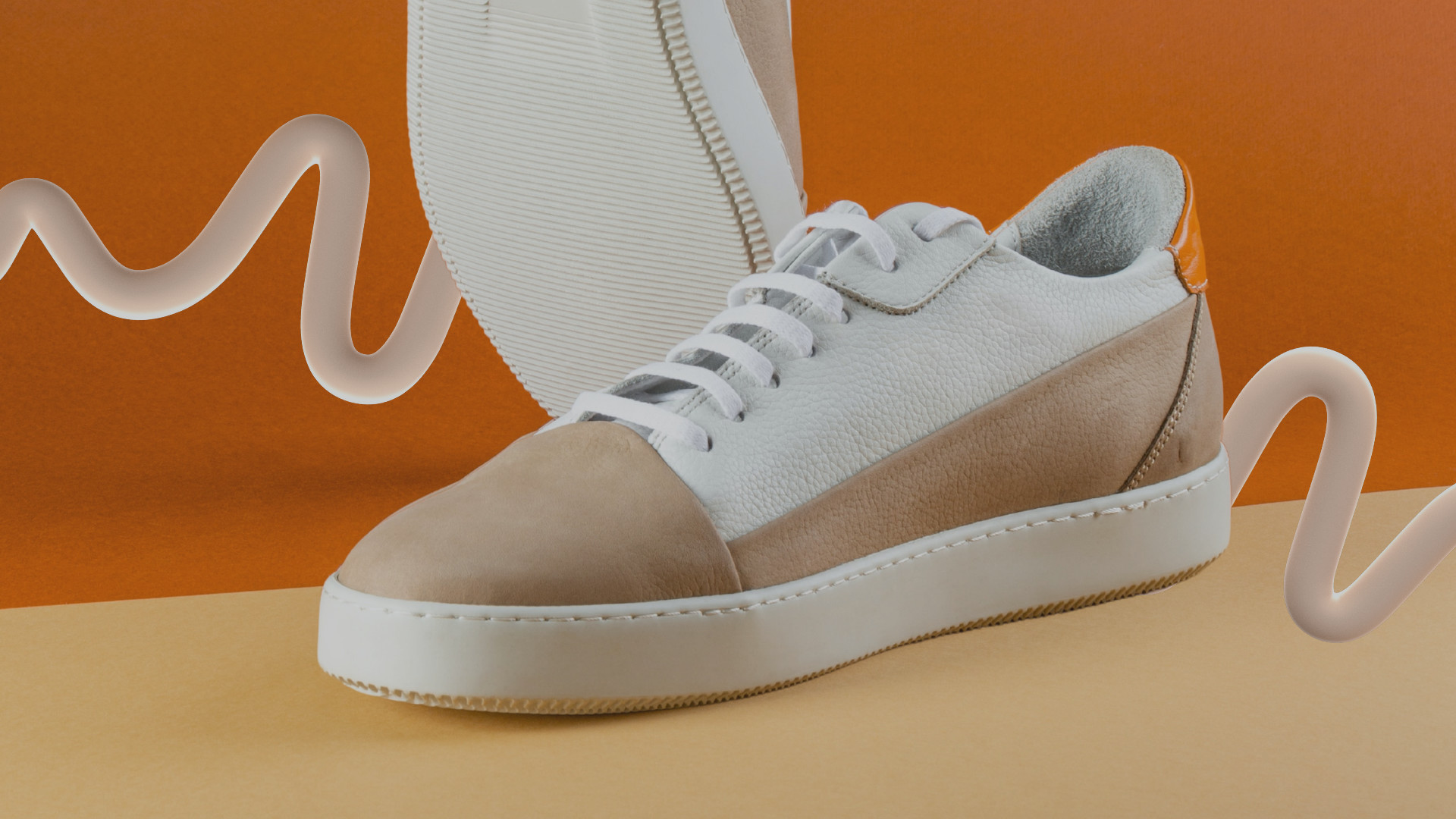This is the final article in a series that was inspired by a conversation I had with a 3D vendor earlier this year. After that discussion, I committed to writing a short series of articles that would hopefully inspire, educate, and inform the forward-thinking companies that want to add 3D to their creative toolkits, but are confused on where to start.
The four parts that came before this article tackled individual topics under the 3D umbrella, but in this final piece I wanted to address some of the most common questions that brands and retailers ask when the time comes to make their vision for 3D real.
Recently, I’ve been speaking directly to several brands who are in this exact position: determined to adopt 3D, excited by the possibilities demonstrated by the 3D vendors who have taken part in The Interline’s two-month 3D focus, but unsure what steps to take.
To help address their questions, and possibly yours, I’ve modelled the rest of this article as a conversation between me – asking the questions – and a hypothetical brand. If you’re considering adopting 3D, try to answer the same questions as you read, and see where your answers differ from our imaginary brand’s. After each answer, I’ve included a short analysis that might help inform your decision-making.
Question 1: What do you want from a 3D solution?
Answer: We want 3D to help our designers to reduce the number of physical samples and become more efficient, delivering new design options to market with improved speeds.
Analysis: This is by far the most common reason for investigating 3D, and the results speak for themselves. On average, the number of physical samples required for each final, sealed sample is six – a figure that sounds hard to believe, but is backed up by research and my own first-hand experience. As a work-study engineer that has spent over four decades in the fashion sector, I have carried out numerous design and production studies that reveal the true size of the sampling challenge, and while some outliers may be able to reduce their sample to sealed sample ratio to something more like 3:1, this is rare.
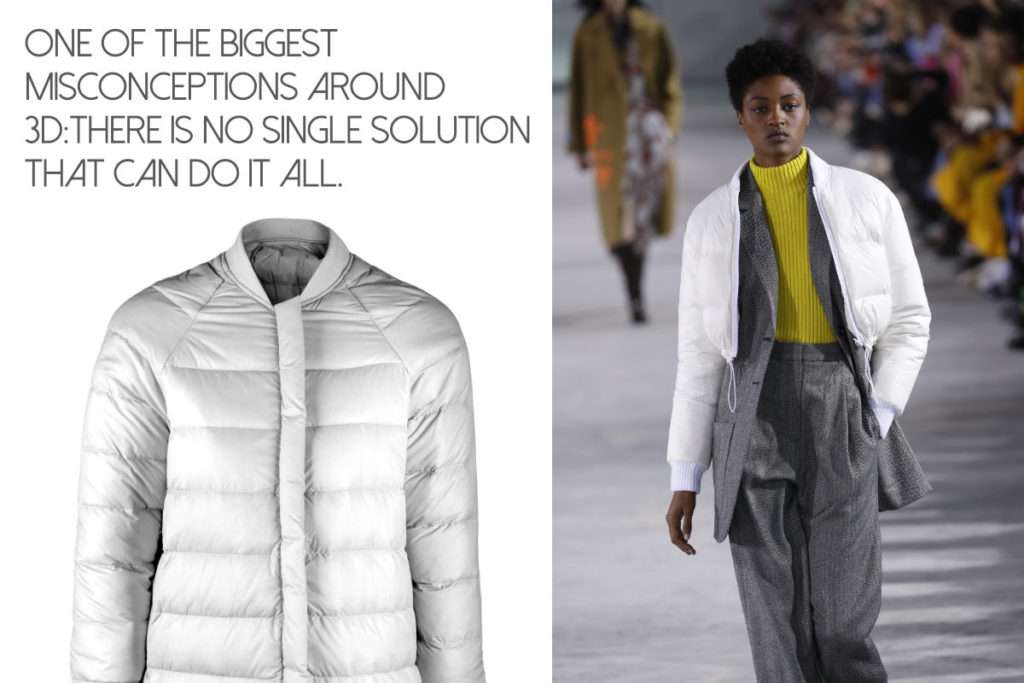
Properly implemented, integrated, and used, 3D can cut several sample iterations from any product lifecycle, delivering tangible benefits in speed and sustainability. In the best case scenario, with a fully digital, 3D workflow, a brand might be able to get that sample number down to just one – the final sample that will be used as a contractual reference measure against production deliveries.
On the efficiency side, the good news is that businesses can dramatically increase a designer’s efficiency levels by providing them with new, intuitive tools. Working in 3D can help designers to be more creative by increasing and increase the number of options and colourways they can present, in a fraction of the time than what would be required by conventional practices.
Sample reduction and creativity should, without question, be key success metrics for any 3D project.
Question 2: What other processes or improvements do you expect to come from the implementation of a 3D solution?
Answer: We also want the solution to help improve the fitting process, and provide us with a way to communicate with our supply-chain partners – ensuring that we are all aligned when it comes to the specification, fitting and final make-up details of our products.
Analysis: Fit and collaboration are two further key objectives for 3D, with detailed simulation offering a way to tweak patterns and see the results in real-time, while communicating with suppliers visually reduces the risk of interpretation and error.
To help improve fit, though, 3D garment simulation is not enough. We need to go back to our real customers and understand who they are in terms of their gender, shape and sizing details. Unless we truly know our customers sizing details, we will never be able to truly make a difference to fit, returns and the loss of customers that results from bad fit and inaction on improving it. The third article in this series broke down the need to understand the real size of your customer base, and to create engineered block patterns and families of avatars to match.
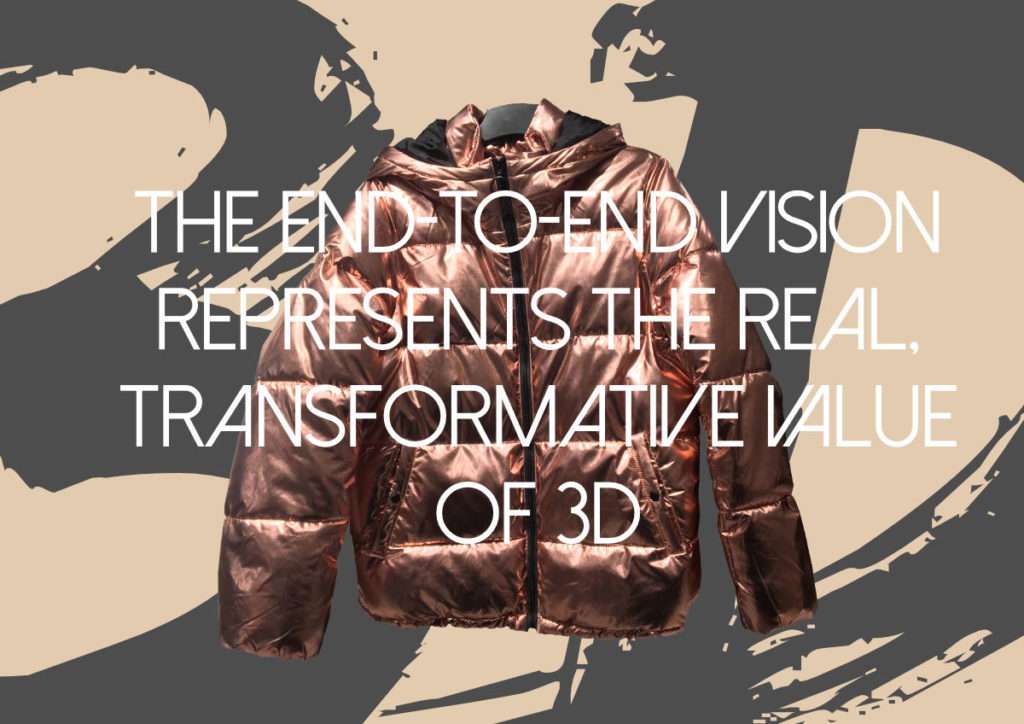
In terms of communication across the supply chain, most 3D solutions enable the sharing of 3D files with third-party partners, which can enable co-creation and improve delivery timelines and product quality.
So whether they fit into a first or second phase, both of these objectives should be on the radar for your 3D project.
Question 3: What types of products are you intending to use 3D for?
Answer: We sell ladieswear, menswear and childrenswear – both clothing and footwear. We would like a 3D solution that can support our full range of products.
Analysis: This is a difficult question to address, because it cuts to one of the most prevalent misconceptions around 3D: that one solution can do it all.
If you are looking at 3D simply to create digital scans of physical products – to populate an interactive eCommerce storefront, for example, or for marketing purposes – then yes, one 3D platform could fulfil all your needs. However, in the vast majority of cases, this is not what a brand actually wants or needs; they are looking instead to use 3D for design, technical development, and supplier collaboration – all of which have different demands than creating renders that are solely to be looked at.
In reality, there are specialised 3D solutions for different product types. In the case of garments then there are a number of 3D solutions, with highly specific tools such as complex fabric draping engines which would be redundant in other product lines. Then for footwear, we have another group of specialised vendors that take shoes from a basic 3D last – the equivalent of our clothing avatars – all the way to a virtual-twin of a shoe. The same goes for bags, watches, jewellery and other accessories. One or two 3D vendors do support the development of both garments and bags today ,but for the most part, the different solutions remain specialised.
The most important thing to realise, if you are considering investing in 3D, is that – if you are a multi-category business – it’s quite likely that you may be looking at solutions, plural, rather than one single 3D tool for everything you need to achieve.
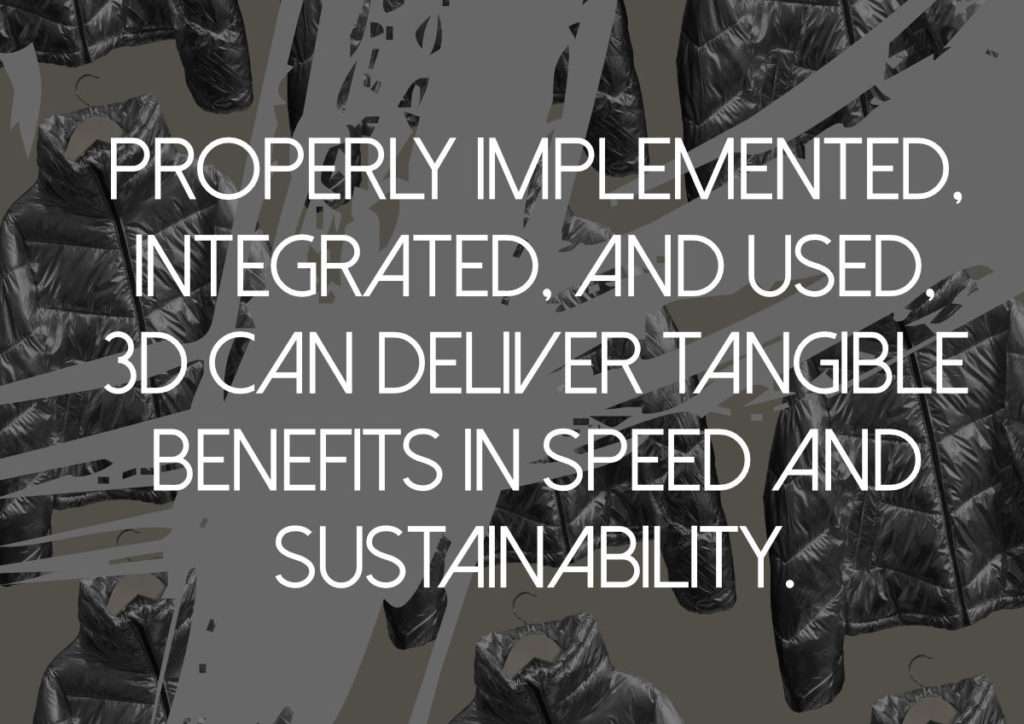
Question 4: What’s your long-term vision for 3D?
Answer: We want to use it in as many places as we can – from prototyping and design, right through to marketing and sales.
Analysis: If you have read the previous articles in this series, or engaged with any of the content put out by our guest authors and sponsors in April and May, you will know that this sort of end-to-end vision represents the real, transformative value of 3D: using it for both design and development and then selling high-fidelity virtual-twins of products that might not even exist yet.
Believe or not there are now literally thousands of products being sold to consumers and then manufactured after the fact – from furniture to fashions. Today we have arrived at a point in time where the unreal truly has become the real, and a high quality render can be indistinguishable from a real garment!
It can be tempting, when you are thinking about your first steps into 3D, to see these applications as added-value, but in reality the best 3D solutions can support a workflow that can extend right the way from design and development and into a level of photorealism that has typically only been possible in film VFX work and videogames. Overlooking these possibilities would be a mistake when the potential they offer – advertising believable-looking styles that are still in production – is so great.
I want to conclude this series by thanking the 3D vendors who have supported our 3D editorial focus during April & May, and helped to tell the story of just how far 3D for fashion – at a whole enterprise level – has come. 3DLOOK, Browzwear, CLO, Embodee, Gerber Technology, Lectra, PixelPool, virtuality.fashion, and Vizoo. I also want to thank our readers for your fantastic support and positive comments that I and the team have received – and we hope that the last two months have provided some guidance on how to fulfil your own 3D ambitions.

